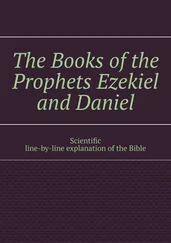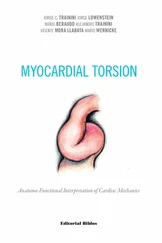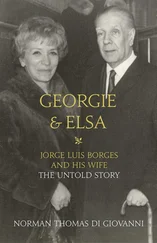Too much time passed in our lives but not for the indifferent river flow that carried us pretending to be the same one that had picked us up. We changed the primitive ideas, discovering them as overlapping sheets, one after the other. Time passed ruthlessly. We often did not notice that drainage in our lives when we were in the middle of the river. We persistently called on another batch of younger scientists to join the task. We never gave up because we never finished the work. Today we can offer what we have achieved, always to the limit reached, since everything keeps on flowing. The hypothesis of the cardiac structure-function achieved through the access to its myocardial intimacy enriches the passion of each of us and also, of those who were before in this river. At one point we established: “The heart is a majestic city/of well-known frontiers/ with its hidden, mysterious/ and unexplored streets.” Having simplified the heart of its apparent complexity brought us closer to the rest of science. To understand and make understanding beautiful, according to Niels Bohr, on how a theory should be.
We did not remain inside the medical art and its own postulates. We used the translational character that science has in its current evolution. No more isolated disciplines, but all together. We understood that an isolated science is not a science. For this reason, despite coming from different techniques, we remained together throughout these years. We advanced along that river flow that sometimes darkened, yet other times was so clear that it reflected our images. At intervals it seemed so reluctant to reveal the mysteries that we plunged into its gloom. We were hurt by the death of our initial companion in this mission, Jesús Herreros, and the inclement events that occurred in others. What strange motivation pursued us not to succumb? We do not know. In everything there is chance and need. They are hidden, unconscious instances, but they guide us. It is the rite of science to uncover some veil of the mystery.
Time was the mandatory step. Nothing could be done by waiting. We tried not to let the advancing knowledge drift between its efforts. Perseverance is the mother of victories. Ultimately, energy is a scale of packages called quanta. With this strategy, steps followed one after the other more frequently, since the elements collected in the research allowed us to go from the unexplored to simplification.
This research has not been intended as a copy of previous experiences. We have advanced into the dark corners of the cardiac structure-function of the heart. As the new acquired knowledge was incorporated, we were allowed to draw a map in those empty spaces. We gradually understood that each conceptual point that was achieved was not arboreal or linear, but that the same finding interconnected into a whole, in a rhizome-like structure. So is the heart.
During the 18th century, knowledge was grouped together. Later, with intellectual progress, it was divided into fragments restricted to different topics. This process separated sciences from their holistic nature, with inappropriate results as each domain was left at the mercy of its own entropy with a lower energy input from the rest of knowledge. In this research we have undertaken, the different disciplines used to this effect were intertwined, just as it is in the universe, to make knowledge coherent. We went further. As the heart is a thermodynamic organ that manages a blood flow, the rhizome went beyond medicine. It advanced on physics, hydraulics, and calculus. Thus, an interrelated knowledge, with its interconnected, crisscrossed inputs and outputs was achieved. Although the tracing of previous experiences always illuminated the meaning of ours, the limit of the structure-function reached on the center of the pulse was considerably widened. The glowing question that arises is: What conclusions can we reach with the equations in the framework of cardiac functioning? The aim was the hope of joining all the partial knowledge in a unified structure-function, relating the magnitudes of the model with the observations. We believe that in this river of knowledge the theory of the rhizome led us to a map of the heart, which always constitutes the eternal return to the amazement of its gift.
Dilemmas and errors do not go against this investigation. It is not feasible to advance and explain new ideas without taking risks even in the most exact sciences, more so in a factual one such as medicine that carries human pain and consciousness in its subject of analysis. We have assumed it without forgetting that the river of knowledge continues to flow, always to the next day. We have been in the middle of its course for a long time, far from the stillness offered by its banks. Now, the tears shed and successes achieved have flowed as part of that river. Perhaps we can return to the shore while other explorers of knowledge enter the new waters that we seek to baptize with dedication and honor. Those that today begin to be the past.
The authors
The function of the heart is of an anisotropic mechanical complexity that must be addressed in terms of its structure. In the study of myocardial anatomy, we postulate the principle that its organization is strictly related to its functional capacity. This led our investigations to explain its morphological and mechanical integrity. If we stop in classical descriptions of the heart we realize that ventricular anatomical attention was focused on its external and internal surfaces, granting scant importance to the intimate muscle conformation. It was determined that its arrangement forms two contiguous ventricular chambers, limited by a homogeneous, solid, compact muscle thickness and with a global uniform contraction. It was not considered that cardiac functional capacity required a reinterpretation of the spatial myocardial fiber organization and motion, introducing us in other topics of its functioning that were practically disregarded by cardiology.
An explanation for this apparent ventricular muscular homogeneity with an intricate anatomical arrangement that hides its helical conformation, implies considering that its structural solidity is required in birds and mammals to eject blood at high velocity in a limited time span by an organ that must serve two circulations (systemic and pulmonary). Currently, the helical myocardium can be confirmed by the anatomical study of the heart via an adequate dissection that manages to uncoil it in its entirety and by other procedures, namely: histological exploration, magnetic resonance diffusion tensor imaging studies, speckle-tracking echocardiography analysis, electrophysiological studies with three-dimensional electroanatomic mapping and “animal villi” investigations. All of these procedures were used for this research.
Dissection leads to differentiate the real internal myocardial anatomy, contrary to the classical concept, finding a helical structure with defined planes that allows the successive physiological motions of narrowing, shortening-torsion, lengthening-detorsion and expansion depending on the propagation of the electrical stimulus along its muscle paths.
This pathway leading from structure to function induced the understanding of topics poorly explained by their mechanical organization, but which should be considered complementary among them and essential for physiology, namely:
1 Anatomical and histological research on the myocardial segmental continuity. Can the myocardium be considered a continuous, single and integral muscle?
2 The unavoidable emerging question is that in order for the muscle segments that make up the ventricular chambers to twist they should have a supporting point, similarly to what a skeletal muscle does in a rigid insertion: Do they exist in the heart? If this support is real, how does the myocardium insert into this structure? This aspect about a myocardial support is not the only argument to consider since cardiac power generates a force capable of ejecting the ventricular content at a speed of 200 cm/s at low energy expenditure. Undoubtedly, in view of this developed capacity, it is necessary to attach the myocardium to a point of support to achieve its motions.
Читать дальше












